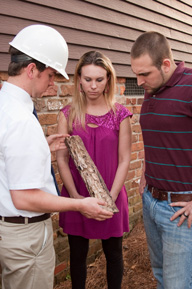Integrated Pest Management: Pest Control Made Easy

Posted by peter88
from the Home and Garden category at
21 Jul 2011 11:01:17 pm.

One of the best ways homeowners and pest professionals can work together to prevent and control pest infestations is to employ a method called Integrated Pest Management, also referred to as IPM.
IPM is a process involving common sense and sound solutions for controlling pests. The focus is upon finding the best strategy for a pest problem, and not merely the simplest. Pest professionals never employ a "one-size-fits-all" method in IPM but rather utilize a three-part practice: inspection, identification and treatment by a pest professional. Treatment options in IPM can vary from proactive measures like sealing cracks and removing food and water sources to reactive measures, such as utilizing pest products, when necessary.
The "integrated" in Integrated Pest Management does not merely describe the three-part practice of inspection, identification and treatment. It reflects the joint commitment between homeowners and pest professionals to stop pests before they invade. The two parties work together to identify the causes and risks of invasions and to devise treatments for when they do.
When it comes to IPM, prevention can be as important to pest control as treatment. It's important to find a qualified professional that can identify and point out a home's vulnerabilities and offer prevention tips for homeowners. Here are a few pest prevention techniques in an IPM program:
* Repair any leaky pipes, especially in areas under sinks where pests can often go unnoticed.
* Seal up cracks and holes around pipes and wiring.
* Keep all foods in sealed containers, including pet food.
* Keep tree branches and other plants cut back from the house.
* Eliminate sources of moisture or standing water.
* Wipe counters, floors and other surfaces frequently.
* Store garbage in sealed containers and dispose of it regularly.
* Vacuum often.
To find a pest professional, or to learn more about IPM, visit www.pestworld.com.
0 Comments



